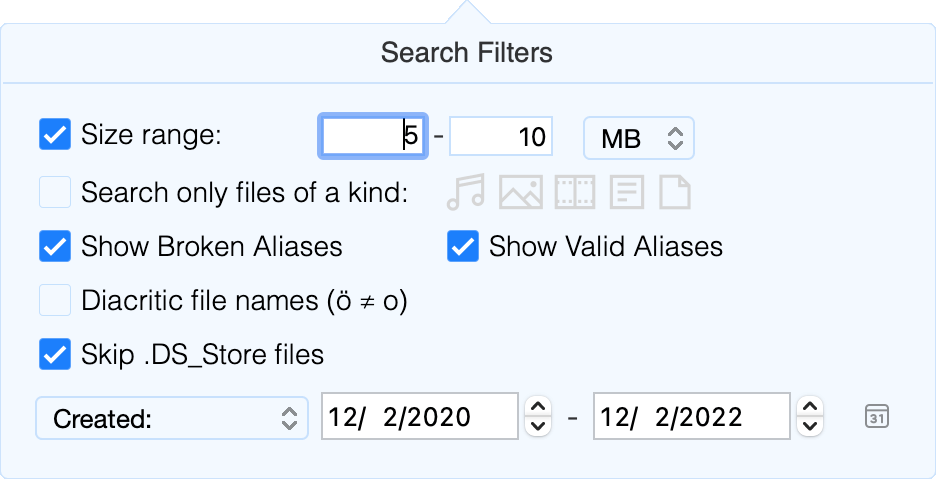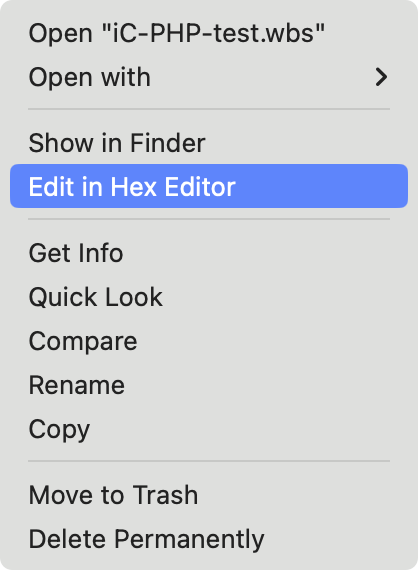(1) Define search options. You can narrow find results by setting file size, date and kind. Only files meeting the criteria will be found.
"File size between" allows to specify the file size range. The size can be specified in B, kB, MB and GB.
"File kind". You can choose any combination of the types or all files.
Selecting "Diacritic" checkbox in the options popup will distinguish national characters eg. óäúá .
The date part allows to find files which were created or modified at the specified date range. Click calendar icon on the right to display the date dialog. Date range dialog allows to set the date using start/end calendar or by specify number of days since today.




